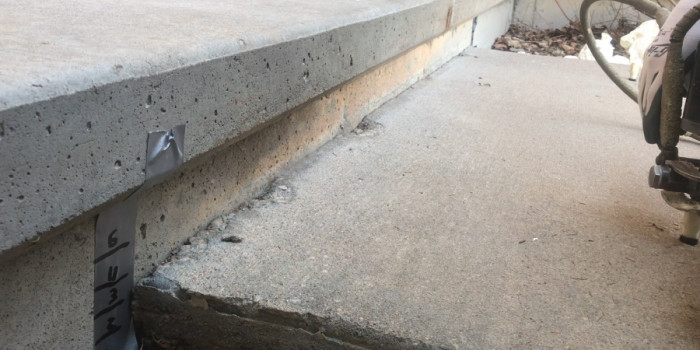
Lift, Level, and Restore: Why Spray Polyurethane Foam is Changing Concrete Repair

As the backbone of structures, concrete foundations provide stability and support, but over time, issues such as settling, sinking, or unevenness can compromise their integrity. Traditionally, repairing sunken or uneven concrete involved costly and invasive methods like mudjacking or slab replacement. However, a revolutionary solution has emerged in the form of concrete lifting with spray polyurethane foam (SPF). Let's delve into this innovative technique and its transformative impact on concrete repair and restoration.
Understanding Concrete Lifting with Spray Polyurethane Foam
Concrete lifting with spray polyurethane foam, also known as foam jacking or foam lifting, is a non-invasive and highly effective method for raising and leveling sunken or uneven concrete slabs. This process involves injecting a specialized formulation of two-component polyurethane foam beneath the sunken slab. As the foam expands, it fills voids, compacts loose soil, and lifts the concrete to its original position, restoring its stability and alignment.
The Advantages of Foam Lifting
Foam lifting offers numerous advantages over traditional concrete repair methods:
- Precision and Accuracy
The controlled expansion of polyurethane foam allows for precise and accurate lifting of concrete slabs to desired elevations. Contractors can adjust the injection process to achieve uniform results and eliminate unevenness, ensuring a level surface with minimal disruption to surrounding areas.
- Speed and Efficiency
Foam lifting is a rapid process that requires minimal downtime compared to traditional methods like mudjacking or slab replacement. Contractors can complete projects quickly, allowing homeowners or businesses to resume normal activities without prolonged inconvenience or disruption.
- Long-lasting Results
Polyurethane foam is lightweight yet incredibly durable, providing long-lasting support and stability to lifted concrete slabs. Unlike traditional materials like mud or concrete, polyurethane foam is resistant to moisture, erosion, and soil settlement, ensuring lasting performance and reliability.
- Non-invasive Approach
Foam lifting is a non-invasive and environmentally friendly alternative to traditional concrete repair methods. It requires minimal excavation and disruption to surrounding landscaping, structures, or utilities, minimizing the risk of damage and preserving the integrity of the property.
Common Applications of Foam Lifting
Foam lifting with polyurethane foam is suitable for a wide range of residential, commercial, and industrial applications:
- Driveways and Sidewalks: Corrects sunken or uneven concrete surfaces caused by soil erosion, settlement, or tree root intrusion.
- Patios and Pool Decks: Restores stability and safety to outdoor recreational areas by leveling sunken concrete slabs.
- Garage Floors: Raises and levels garage floors to eliminate trip hazards and facilitate smooth vehicle movement.
- Warehouse Floors: Addresses concrete settlement or sinking in industrial facilities, ensuring safe and efficient operations.
- Foundation Repair: Stabilizes and lifts concrete foundations, preventing further structural damage and maintaining building integrity.
Lifting & Leveling Concrete with Profoam Corporation
Conclusion
Concrete lifting with spray polyurethane foam represents a modern and innovative approach to concrete repair and restoration. By leveraging the expansive properties of polyurethane foam, contractors can lift and level sunken or uneven concrete slabs quickly, efficiently, and with minimal disruption. The precision, durability, and non-invasiveness of foam lifting make it a preferred choice for homeowners, businesses, and contractors seeking cost-effective and long-lasting solutions to concrete settlement and leveling issues. As technology continues to advance, foam lifting with polyurethane foam will undoubtedly remain at the forefront of concrete repair techniques, revolutionizing the way we address foundation problems and maintain the integrity of our built environment.






